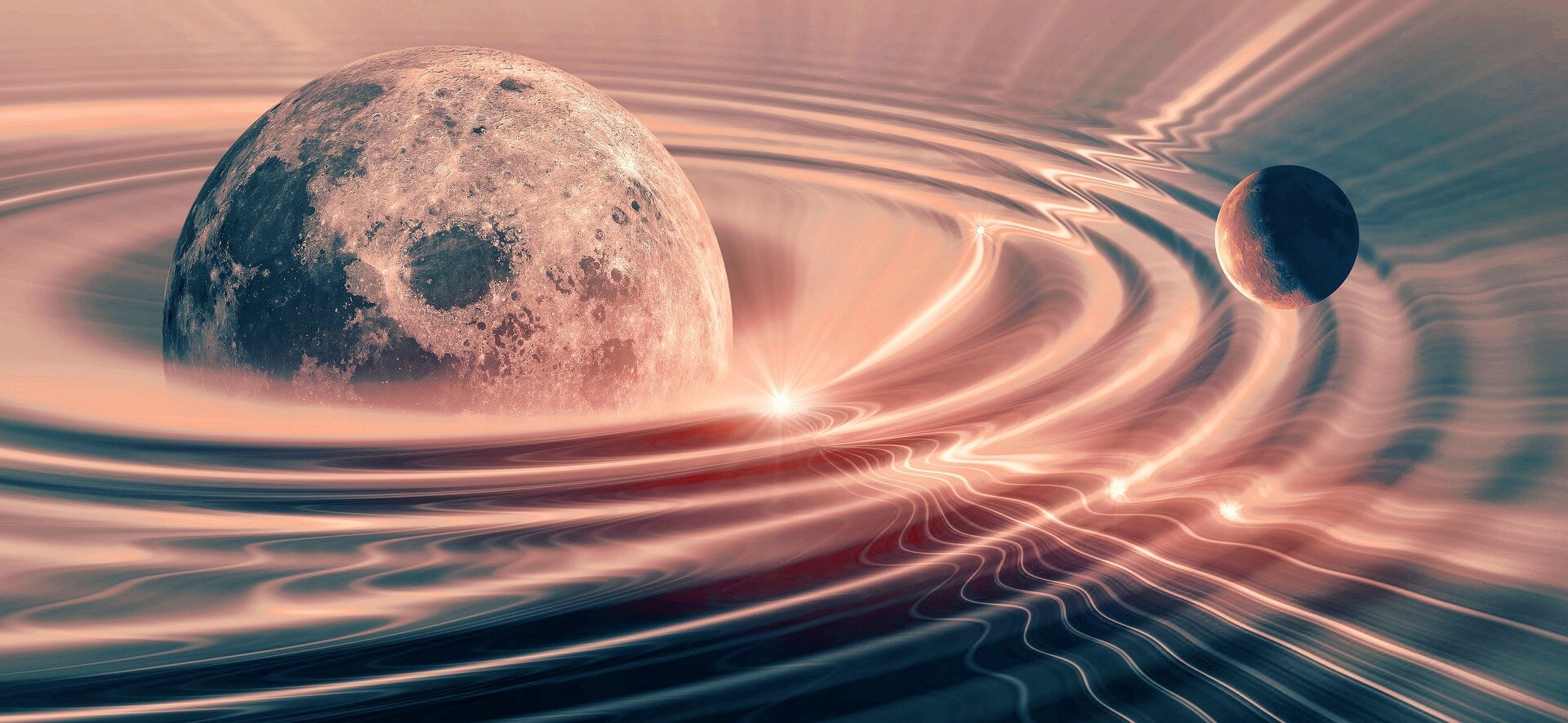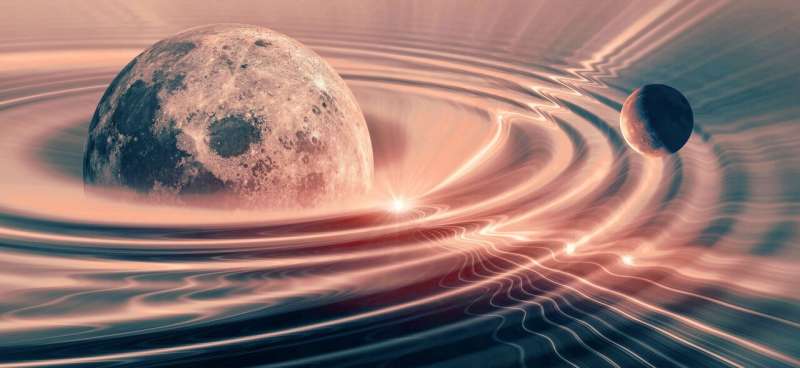

When speaking of our universe, it’s often said that “matter tells spacetime how to curve, and curved spacetime tells matter how to move.” This is the essence of Albert Einstein’s famous general theory of relativity, and describes how planets, stars, and galaxies move and influence the space around them. While general relativity captures much of the big in our universe, it’s at odds with the small in physics as described by quantum mechanics.
For his Ph.D. research, Sjors Heefer has explored gravity in our universe, with his research having implications for the exciting field of gravitational waves, and perhaps influencing how the big and small of physics can be reconciled in the future.
A little over a hundred years ago, Albert Einstein revolutionized our understanding of gravity with his general theory of relativity.
“According to Einstein’s theory, gravity is not a force but emerges due to the geometry of the four-dimensional spacetime continuum, or spacetime for short,” says Heefer. “And it’s central to the emergence of fascinating phenomena in our universe such as gravitational waves.”
Massive objects, such as the sun or galaxies, warp spacetime around them, and other objects then move along the straightest possible paths—otherwise known as geodesics—through this curved spacetime.
Due to the curvature, however, these geodesics are not straight in the usual sense at all. In the case of the planets in the solar system, for instance, they describe elliptical orbits around the sun. In this way, general relativity elegantly explains the movement of the planets as well as numerous other gravitational phenomena, ranging from everyday situations to black holes and the Big Bang. As such, it remains a cornerstone of modern physics.
Clash of the theories
While general relativity describes a host of astrophysical phenomena, it clashes with another fundamental theory of physics—quantum mechanics.
“Quantum mechanics suggests that particles (like electrons or muons) exist in multiple states at the same time until they are measured or observed,” says Heefer. “Once measured, they randomly select a state due to a mysterious effect referred to as the ‘collapse of the wave function.'”
In quantum mechanics, a wave function is a mathematical expression that describes the position and state of a particle, such as an electron. And the square of the wave function leads to a collection of probabilities of where the particle might be located. The larger the square of the wave function at a particular location, the higher the probability that a particle will be located at that location once it is observed.
“All matter in our universe appears to be subject to the strange probabilistic laws of quantum mechanics,” Heefer notes. “And the same is true for all forces of nature—except for gravity. This discrepancy leads to deep philosophical and mathematical paradoxes, and resolving these is one of the primary challenges in fundamental physics today.”
Is expansion the solution?
One approach to resolving the clash of general relativity and quantum mechanics is to expand the mathematical framework behind general relativity.
In terms of mathematics, general relativity is based on pseudo-Riemannian geometry, which is a mathematical language capable of describing most of the typical shapes that spacetime can take.
“Recent discoveries indicate, however, that our universe’s spacetime might be outside the scope of pseudo-Riemannian geometry and can only be described by Finsler geometry, a more advanced mathematical language,” says Heefer.
Field equations
To explore the possibilities of Finsler gravity, Heefer needed to analyze and solve a certain field equation.
Physicists like to describe everything in nature in terms of fields. In physics, a field is simply something that has a value at each point in space and time.
A simple example would be temperature, for instance; at any given point in time, each point in space has a certain temperature associated with it.
A slightly more complex example is that of the electromagnetic field. At any given point in time, the value of the electromagnetic field at a certain point in space tells us the direction and magnitude of the electromagnetic force that a charged particle, like an electron, would experience if it were located at that point.
When it comes to the geometry of spacetime itself, that is also described by a field, namely the gravitational field. The value of this field at a point in spacetime tells us the curvature of spacetime at that point, and it is this curvature that manifests itself as gravity.
Heefer turned to the Christian Pfeifer and Mattias N. R. Wohlfarth’s vacuum field equation, which is the equation that governs this gravitational field in empty space. In other words, this equation describes the possible shapes that the geometry of spacetime could take in the absence of matter.
Heefer explains, “To good approximation, this includes all interstellar space between stars and galaxies, as well as the empty space surrounding objects such as the sun and the Earth. By carefully analyzing the field equation, several new types of spacetime geometries have been identified.”
Gravitational waves confirmation
One particularly exciting discovery from Heefer’s work involves a class of spacetime geometries that represent gravitational waves—ripples in the fabric of spacetime that propagate at the speed of light and can be caused by the collision of neutron stars or black holes, for example.
The first direct detection of gravitational waves on September 14, 2015, marked the dawn of a new era in astronomy, allowing scientists to explore the universe in an entirely new way.
Since then, many observations of gravitational waves have been made. Heefer’s research indicates that these are all consistent with the hypothesis that our spacetime has a Finslerian nature.
Scratching the surface
While Heefer’s results are promising, they only scratch the surface of the implications of the field equation of Finsler gravity.
“The field is still young and further research in this direction is actively ongoing,” says Heefer. “I’m optimistic that our results will prove instrumental in deepening our understanding of gravity and I hope that, eventually, they may even shine light on the reconciliation of gravity with quantum mechanics.”
More information:
S.J. Heefer, Finsler Geometry, Spacetime & Gravity (2024)
Provided by
Eindhoven University of Technology
Citation:
Gravitational waves and the geometry of spacetime (2024, June 4)
retrieved 4 June 2024
from https://phys.org/news/2024-06-gravitational-geometry-spacetime.html
This document is subject to copyright. Apart from any fair dealing for the purpose of private study or research, no
part may be reproduced without the written permission. The content is provided for information purposes only.

